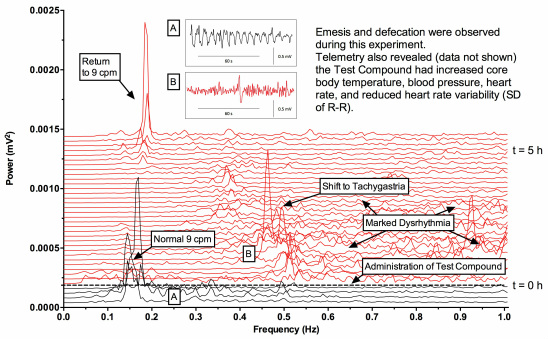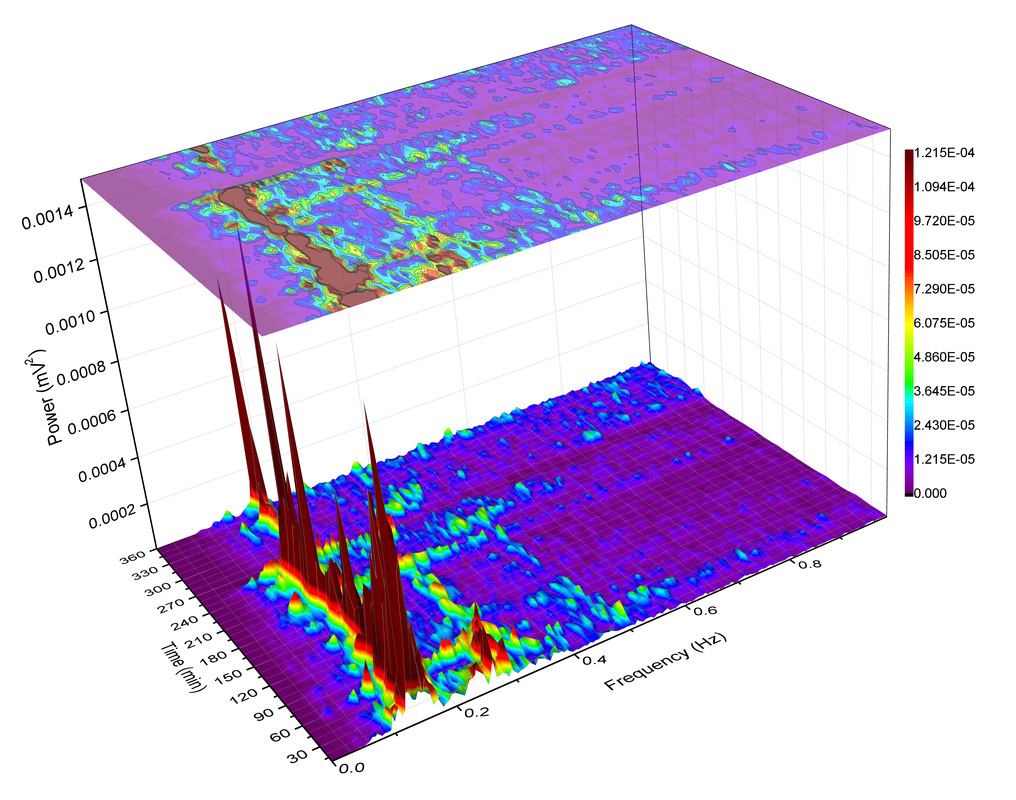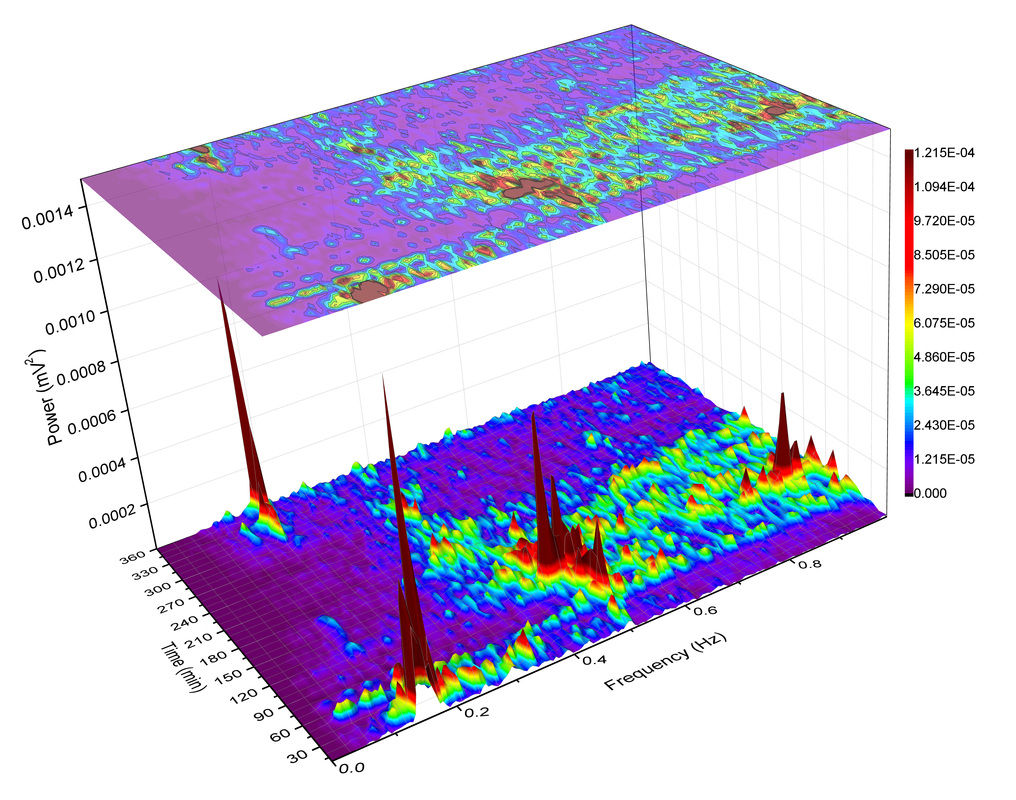GI Dysrhythmia
Slow Waves in Health and Disease
|
Radiotelemetric Recording of the Electrogastrogram

We use radiotelemetric recording techniques to record gastric slow waves in the mouse, Suncus murinus and ferret.
The approach involves the surgical implantation of radiotransmitters capable of recording gastric myoelectric signals (sampled at 1 kHz), and electronic filtering in several steps to remove cardiac and respiratory signals, as well as low frequency artifacts such as movement.
Data can then be computed on successive sections of recordings to reveal (i) the dominant power (DP, the highest power in recorded range); (ii) the dominant frequency (DF, frequency bin with the highest power in the range); (iii) the DF instability coefficient (DFIC, defined as the standard deviation of the DF divided by its mean, over a 10 min period).
We look at the duration of effects of drug action during our experiments, and also correlate the information
with changes in blood pressure and temperature (also measured telemetrically), and also with behavioural changes including emesis, modification of feeding and drinking, and locomotor activity.
We are in the process of advancing our technology to be able to simultaneously record respiratory function by whole body plethysmography during the acquisition of radiotelemetric data.
The approach involves the surgical implantation of radiotransmitters capable of recording gastric myoelectric signals (sampled at 1 kHz), and electronic filtering in several steps to remove cardiac and respiratory signals, as well as low frequency artifacts such as movement.
Data can then be computed on successive sections of recordings to reveal (i) the dominant power (DP, the highest power in recorded range); (ii) the dominant frequency (DF, frequency bin with the highest power in the range); (iii) the DF instability coefficient (DFIC, defined as the standard deviation of the DF divided by its mean, over a 10 min period).
We look at the duration of effects of drug action during our experiments, and also correlate the information
with changes in blood pressure and temperature (also measured telemetrically), and also with behavioural changes including emesis, modification of feeding and drinking, and locomotor activity.
We are in the process of advancing our technology to be able to simultaneously record respiratory function by whole body plethysmography during the acquisition of radiotelemetric data.

